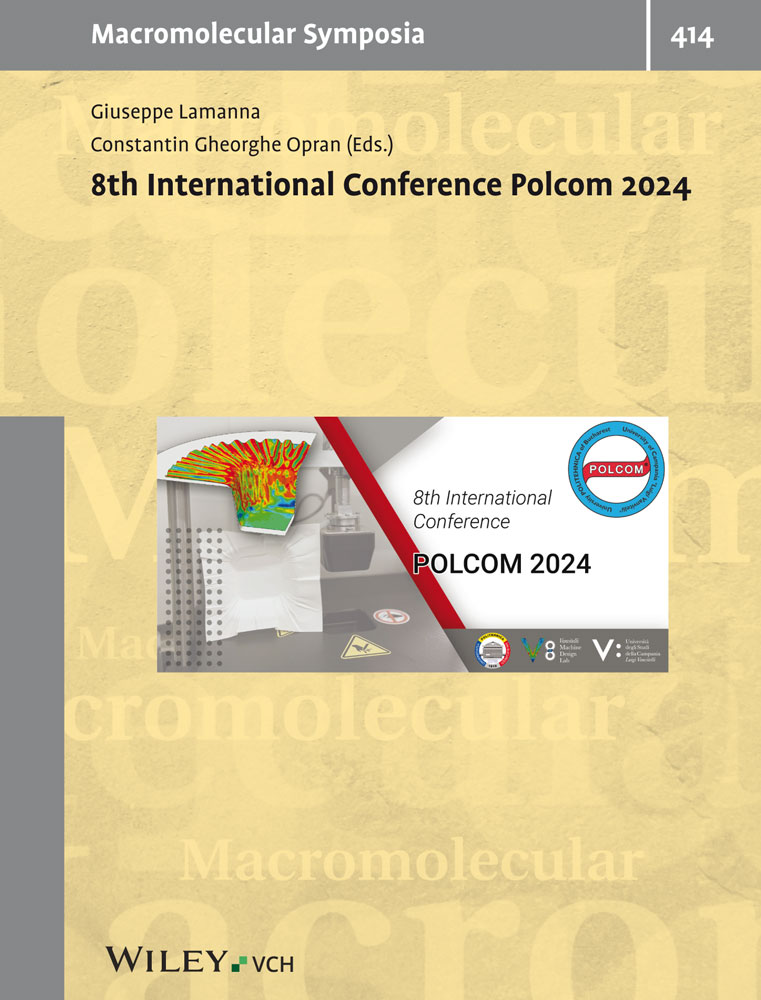Influence of Phase Morphology on Molecular Mobility of Poly(propylene)-(ethylene-vinyl acetate) Copolymer Blends
Abstract
The dynamic mechanical and dielectric behaviours of Polypropylene (PP) and (Ethylene-Vinyl Acetate) Copolymer (EVA) blends are reported as a function of the morphology. For EVA contents lower than 20%, blends show the two-phase morphology characteristic of immiscible blends, with spherical EVA droplets finely dispersed in the PP matrix. After stretching in the molten state, the morphology of EVA fibers is observed. Mechanical Relaxation Spectroscopy display three relaxation processes: the EVA and PP α-relaxations associated to the glass transitions and a β-transition corresponding to a PP crystalline phase relaxation. The PP α-relaxation shifts to higher temperatures when EVA presents a fiber morphology, corresponding to a decrease of PP chain mobility since it is hindered by the reinforcement effect of EVA fibers. Quite different results are obtained by DRS analysis. In blends containing EVA fibers, only one main relaxation associated to the EVA α-transition is observed whereas one additional relaxation can be noticed in the blends containing EVA droplets. This new relaxation might be assigned to interfacial polarization effects, phenomena that are sometimes observed in heterogeneous polymer blends when a low content of one polar component is embedded in a non conductive matrix. In this case, the occurrence of a characteristic interfacial polarization relaxation appears to be correlated to the accessible experimental frequency.




